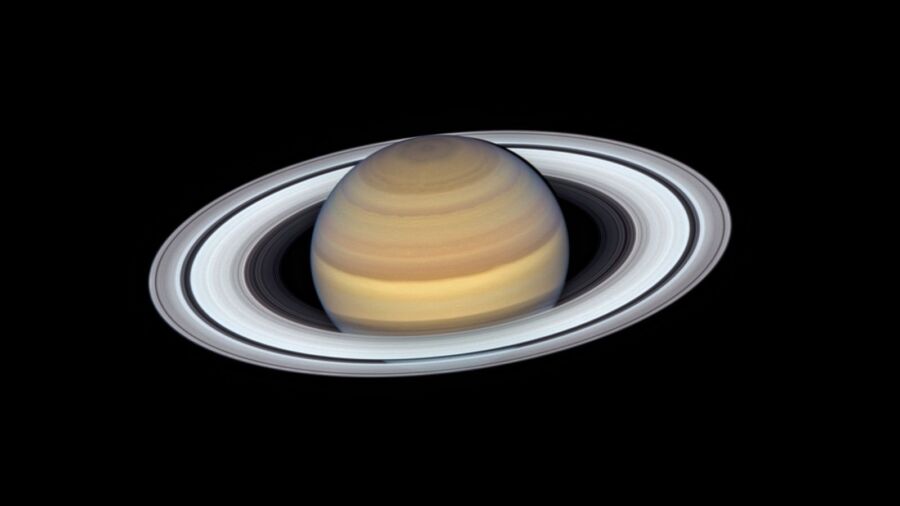Saturn’s iconic icy rings may not be around for future skygazers to glimpse at through their telescopes, according to new research.
A new analysis of data captured by NASA’s Cassini mission, which orbited the gas giant planet between 2004 and 2017, has revealed new insights into how long the rings have been around and when they may vanish from sight. The findings have been shared in three studies published in May.
Our solar system and its planets formed about 4.6 billion years ago, and scientists have long debated the age and origin of Saturn’s rings. Some astronomers have argued that the bright, icy rings must be younger than expected because they haven’t been eroded and darkened by interactions with meteoroids across billions of years.
The Cassini data has led to a new finding, published May 15 in the journal Icarus, that supports this theory of the rings appearing long after Saturn’s initial formation. Additional studies published on May 12 in Science Advances and May 15 in Icarus, respectively, arrived at similar conclusions.
“Our inescapable conclusion is that Saturn’s rings must be relatively young by astronomical standards, just a few hundred million years old,” said Richard Durisen, professor emeritus of astronomy at Indiana University Bloomington and lead author of both Icarus studies, in a statement.
“If you look at Saturn’s satellite system, there are other hints that something dramatic happened there in the last few hundred million years. If Saturn’s rings are not as old as the planet, that means something happened in order to form their incredible structure, and that is very exciting to study.”
It’s likely the seven rings were still forming when dinosaurs roamed the Earth, according to the researchers.
Insights From Cassini
Saturn’s rings are largely comprised of ice, with just a small percentage belonging to the rocky dust created in space by broken asteroid fragments and micrometeoroids. The pieces, similar to sand grains, collide with particles in Saturn’s rings and create floating debris as the ring material orbits the planet.
During Cassini’s Grand Finale, when the spacecraft completed 22 orbits in which it passed between Saturn and its rings, the researchers were able to obtain data about how many meteoroids pollute the rings, the mass of the rings themselves and the rate at which material from the rings rains down on the planet. All the data seemed to point to the same finding about the younger age of Saturn’s rings.
The researchers were able to gauge how much cosmic dust, which moves through our solar system on a regular basis, has built up on the icy rings. Over 13 years, Cassini’s bucket-like Cosmic Dust Analyzer was able to scoop up 163 grains of dust that originated from beyond the Saturn system as they whirled around the gas giant. The rings were surprisingly “clean,” which suggested that they must not have been around long enough to accumulate an excess of cosmic dust.

Meanwhile, as meteoroids infiltrate the rings, they push material within the innermost rings toward Saturn at a rapid rate. Cassini observed that the rings were losing many tons of mass per second, which means the rings don’t have much time left, astronomically speaking. The researchers estimate that the rings will only be around another few hundred million years at most.
Previous research has suggested that the rings may disappear within 100 million years.
Enduring Mysteries
“We have shown that massive rings like Saturn’s do not last long,” said Paul Estrada, research scientist at NASA’s Ames Research Center in Mountain View, California, and a coauthor of all three studies, in a statement.
“One can speculate that the relatively puny rings around the other ice and gas giants in our solar system are left-over remnants of rings that were once massive like Saturn’s. Maybe some time in the not-so-distant future, astronomically speaking, after Saturn’s rings are ground down, they will look more like the sparse rings of Uranus.”
It’s possible that the dark rings around Neptune and Uranus were once larger and brighter, similar to how Saturn’s rings are now, the researchers said.
But what created Saturn’s rings in the first place? Scientists still don’t know for sure.
“The idea that the iconic main rings of Saturn might be a recent feature of our solar system has been controversial, but our new results complete a trifecta of Cassini measurements that make this finding hard to avoid,” said researcher Jeff Cuzzi, a principal investigator at NASA Ames and coauthor of the Saturn research paper that appeared in Science Advances, in a statement.
Future missions to study some of Saturn’s moons could uncover more information about what events created the rings—and lead to other discoveries.
“If we can discover what happened in that system a few hundred million years ago to form the rings, we may just end up discovering why Saturn’s moon Enceladus is spewing out from its deep ocean plumes of water, ice, and even organic material,” Durisen said. “We may perhaps even end up finding the building blocks of life itself on Enceladus.”
The CNN Wire contributed to this report.

